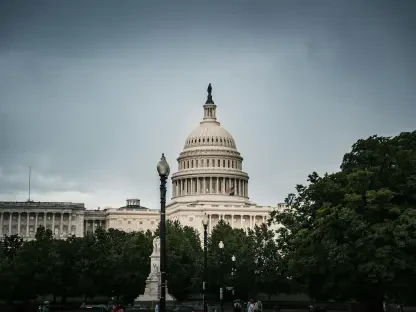In today’s shifting energy landscape, few voices are as insightful as Priya Jaiswal’s when it comes to unraveling the complex web of global oil markets, consumer impacts, and broader economic trends. With a deep-rooted expertise in Banking, Business, and Finance, Priya offers a keen perspective on how recent developments in oil pricing and production are shaping the world economy. In this interview, we explore the implications of plummeting oil prices, the dynamics of supply and demand, and what consumers can expect in the near future.
Can you explain the recent drop in oil prices to their lowest level since February 2021?
The recent drop in oil prices is largely due to OPEC’s decision to increase oil supply as economies strive to rebound from the global slowdown. With an added 411,000 barrels per day expected in June, supply has outpaced demand which contributed to this significant price decrease. When supply begins to eclipse demand just as economic activity remains uncertain, prices tend to fall. It’s a clear indication of how interconnected these global decisions are and how sensitive prices are to such changes.
How did OPEC’s decision to increase oil supply affect the price drop?
OPEC’s decision played a critical role in this price downturn. By increasing supply, they tipped the balance further into surplus territory, especially with a weakening demand backdrop. This move not only impacts immediate pricing but also sets the tone for market expectations, often leading prices to adjust swiftly in anticipation of the new flow of oil into global markets.
What can consumers expect in terms of gas prices this summer as a result of falling oil prices?
Consumers are likely to experience a notable decrease in gas prices at the pump just in time for summer travel. We’re looking at averages potentially dropping below $3 a gallon, which should provide some financial relief. This decline, however, may not be immediate and is subject to fluctuations due to localized factors and the completion of refinery maintenance processes.
How do falling oil prices typically translate into lower prices at the gas pump?
Falling oil prices generally lead to lower prices at the pump because crude oil is a significant cost component in gasoline production. However, this relationship follows a time lag; factors like inventory levels, logistical considerations, and existing contracts can delay these savings from reaching consumers right away. Ultimately, once the adjustments move through the supply chain, drivers should feel the benefit.
Can you elaborate on the impact that refinery maintenance has had on current gas prices?
Refinery maintenance has kept gasoline inventories tight, which has prevented gas prices from falling as quickly as they might otherwise have. During maintenance periods, the production output is reduced, limiting supply. This bottleneck has cushioned the impact of lower oil prices, delaying the decline at the consumer level.
When do you anticipate refinery maintenance to wrap up, increasing gasoline supply and affecting gas prices?
Refinery maintenance is expected to conclude soon, possibly within the next few weeks. This timing should align with an increase in production capacity, allowing gasoline inventories to rebuild. As supply ramps up, we should see a more pronounced impact on gas prices, aligning with the oil market’s current trajectory.
How does the reduction in gas prices benefit the American consumer and the economy overall?
Lower gas prices effectively increase disposable income for consumers. With more money available to spend on other goods and services, there’s a ripple effect that boosts economic activity. Consumer savings often translate into more robust retail sales, support for local businesses, and an overall positive impact on economic growth.
According to JPMorgan, roughly 80% of consumer savings from lower gas prices are spent elsewhere. How does this shift consumer spending?
The shift is quite significant. Lower gas prices free up household budgets, allowing consumers to reallocate spending toward discretionary purchases, whether it’s dining out, shopping, or personal services. This broadens the economic impact, benefiting other sectors and driving forward momentum in economic activity.
What was the significance of the recent OPEC+ meeting about oil production, and how does it impact future oil prices?
The OPEC+ meeting cemented their strategy to increase production which sends a strong signal to markets about expected oil supply levels. This has implications for price volatility and sets a cautious tone for future prices as markets internalize these supply changes, prompting medium-term stabilization expectations.
Why is demand for oil expected to weaken despite increased supply?
Demand is projected to weaken due to an uneven recovery in global economies, further exacerbated by uncertainties like geopolitical tensions and potential shifts towards more sustainable energy sources. These factors, combined with the current pace of supply increases, contribute to a softer demand outlook.
Rob Thummel mentioned “the solution to low prices is low prices.” Can you explain what this means for oil prices and production?
This reflects a market self-correcting mechanism. Low prices often lead to reduced profitability for producers, which can cause them to scale back production. This reduction eventually tightens supply, leading to a potential rebound in prices. It’s a cyclical process that helps stabilize the market over time.
Why are oil prices expected to stabilize within the $60 to $80 per barrel range in the future?
This range represents a middle ground where production remains economically viable for many countries while ensuring that demand persists. Prices above or below this range tend to trigger adjustments in production and consumption patterns, suggesting it as a natural equilibrium point for the current economic context.
Could you discuss the breakeven oil prices for OPEC members and why they are higher than $80 per barrel?
OPEC members often have national budgets heavily reliant on oil revenues, with breakeven prices reflecting the fiscal needs to support government spending. Many rely on at least $80 per barrel to balance these budgets, excluding economic adjustments or spending revamps, further highlighting their dependence.
How might low oil prices affect producers in the long term, and what could lead to a rebound in prices?
Persistently low prices could challenge the viability of higher-cost production regions, potentially leading to shutdowns and reduced investments in new developments. A sustained imbalance could eventually diminish supply capacity, thereby providing the backdrop for price recovery as supply constraints emerge.
Are there any potential risks associated with low oil prices that consumers or producers should be aware of?
Yes, low oil prices could lead to decreased industry investments, resulting in job losses and long-term supply shortages. Both producers and consumers must be mindful of the economic and geopolitical instability that prolonged price suppression can foster. It’s a delicate balance ensuring both affordable consumer costs and sustainable industry operations.
What is your forecast for the global oil market?
Looking ahead, the global oil market might experience phases of volatility as it adjusts to ongoing supply-demand imbalances and global economic uncertainties. However, as countries strive for energy transitions and economic recoveries, we can expect a gradual move towards more stable and possibly cleaner energy-driven pricing structures.









